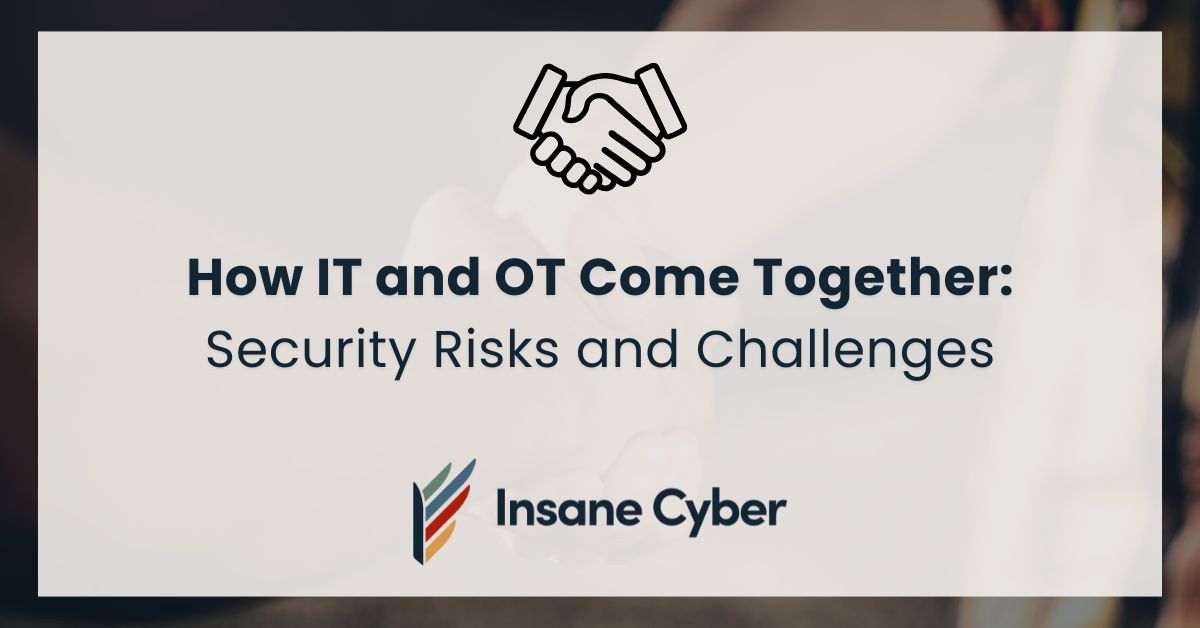The convergence of IT (Information Technology) and OT (Operational Technology) is transforming industries like manufacturing, energy, and transportation. By integrating IT systems (servers, networks, applications) with OT infrastructure (SCADA, ICS, industrial machines), businesses can unlock efficiency, improve decision-making, and enhance automation.
However, this integration also introduces critical cybersecurity risks that organizations must address. Legacy OT systems, expanded attack surfaces, and compliance complexities pose significant challenges.
In this guide, we’ll break down:
- What IT/OT convergence means and why it matters
- The biggest security risks of integration
- Best practices to secure your IT/OT environment
What is IT/OT Convergence?
Before diving into risks, let’s clarify what IT and OT are and how they come together.
IT (Information Technology) – Digital infrastructure for data processing, networking, and business operations. Examples: Servers, cloud platforms, enterprise software.
OT (Operational Technology) – Systems that monitor and control physical processes. Examples: Industrial Control Systems (ICS), Supervisory Control and Data Acquisition (SCADA).
Why IT/OT Convergence is Growing
Increased demand for real-time data in industrial operations
Adoption of Industrial IoT (IIoT) and smart manufacturing
Need for remote monitoring and automation
Compliance with digital transformation initiatives
Security Risks of IT/OT Convergence
While convergence boosts efficiency, it widens the attack surface, exposing critical OT systems to IT-based cyber threats.
Top IT/OT Security Risks:
- Legacy OT Systems Lacking Security
Most OT systems were built decades ago, designed for air-gapped environments (isolated networks). Once connected to IT networks, these outdated systems become vulnerable to cyber threats. - Expanded Attack Surface
IT connectivity exposes critical infrastructure to:- Ransomware and malware targeting OT environment
- Phishing attacks targeting employees managing both IT and OT
- Cloud misconfigurations leading to unauthorized access
- Lateral Movement of Cyber Threats
A successful attack on IT systems can serve as an entry point to OT networks. Cybercriminals can move laterally, disrupting industrial processes or even causing physical damage. - Insider Threats & Human Error
Lack of security awareness among OT teams or poor coordination with IT teams can lead to misconfigurations or accidental exposure of critical systems. Compliance & Regulatory Challenges
Different security frameworks apply to IT vs. OT environments, making compliance more complex:
NIST Cybersecurity Framework (IT)
IEC 62443 (OT security)
GDPR & Data Privacy Laws
How to Secure IT/OT Convergence: Best Practices
To balance innovation and security, organizations must adopt a multi-layered cybersecurity approach.
Strengthen IT & OT Collaboration
- Conduct joint IT/OT security training sessions
- Align on common security goals and incident response plans
- Implement a shared governance model for IT/OT security
Use Network Segmentation & Firewalls
- Separate IT and OT networks to prevent cross-system attacks
- Implement firewalls and VLANs for traffic control
- Use intrusion detection systems (IDS/IPS) for anomaly detection
Secure Endpoints & Devices
- Deploy Endpoint Detection & Response (EDR) across IT and OT
- Enforce multi-factor authentication (MFA) for remote access
- Regularly scan and secure industrial IoT (IIoT) devices
Implement a Strong Patch Management Strategy
- Apply security patches regularly while ensuring system uptime
- Use virtual patching for legacy OT systems that lack vendor support
Adopt a Zero Trust Security Model
- No implicit trust – authenticate and verify every user and device
- Enforce least privilege access (only allow necessary permissions)
- Use behavior analytics to detect abnormal activities
Continuous Monitoring & Threat Detection
- Deploy SIEM (Security Information & Event Management) solutions
- Monitor for suspicious network activity in real-time
- Conduct regular penetration testing and security audits
IT & OT Collaboration is Key
The future of smart industries depends on seamless IT/OT integration—but security cannot be an afterthought. Cross-team collaboration, network segmentation, and Zero Trust security are essential to protecting critical systems.
Is Your IT/OT Environment Secure?
If your organization is navigating IT/OT convergence, now is the time to strengthen your security strategy. Our experts specialize in IT/OT cybersecurity solutions—contact us today to protect your enterprise from evolving threats.
Frequently Asked Questions (FAQs)
1. What is the difference between an OT firewall and an IT firewall?
🔹 IT Firewall: Designed for traditional IT environments (offices, data centers, cloud). It primarily protects against network-based cyber threats, such as malware, phishing, and unauthorized access.
🔹 OT Firewall: Specifically built for industrial control systems (ICS), SCADA, and IIoT devices. It prioritizes low-latency traffic, deterministic communication, and asset-specific protection to prevent disruptions in real-time industrial operations.
2. What is the difference between an OT SOC and an IT SOC?
🔹 IT SOC (Security Operations Center): Monitors and protects enterprise IT networks (email, databases, cloud systems) against traditional cyber threats like ransomware and data breaches.
🔹 OT SOC (Operational Technology SOC): Focuses on securing industrial control systems (ICS), ensuring continuous uptime, monitoring machine-to-machine (M2M) traffic, and defending against physical cyber risks like power plant disruptions or smart grid attacks.
3. What is the difference between IT and OT in cybersecurity?
🔹 IT Cybersecurity: Protects data, servers, networks, and cloud environments against threats like hacking, malware, and phishing. Focuses on data confidentiality, integrity, and availability.
🔹 OT Cybersecurity: Secures physical industrial processes (manufacturing lines, energy grids, transportation systems) from cyber threats that could cause real-world damage. Prioritizes safety, system uptime, and operational continuity.

